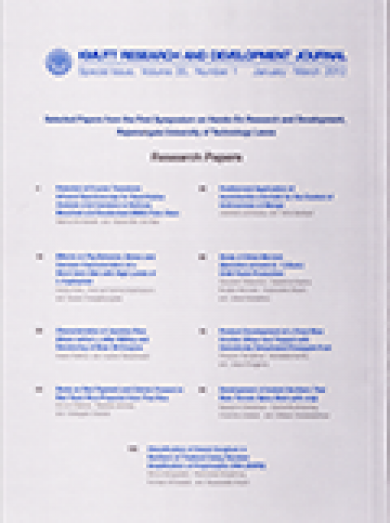Abstract
Effect of mixing ratios of canna starch and rice flour (10:90, 20:80, 30:70 and 40:60) on quality of rice paper was investigated. Rice papers produced were analyzed for their morphology, physicochemical and textural properties, as well as sensory evaluation, using rice papers made from rice flour as a reference. In addition, changes in chemical composition and pasting behavior of canna starch and rice flour after soaking in salt water were also studied. Mixing rice flour with canna starch resulted in the increase of smoothness of rice paper, decrease of cracks found on surface and solubility of rice paper in water. Water activities of all rice papers were in the range of 0.50–0.51. Data of the texture analyses showed that the tensile strength and elongation increased with increasing proportion of canna starch, while the cutting force was decreased. Brittleness of rice papers was not significantly different from the control. However, upon observation for 10 months, rice papers made from rice flour were found more cracks and more numbers of broken rice papers. The sensory tests indicated that the acceptance of rice papers made from rice flour mixed with canna starch was comparable to the control. Soaking milled rice flour in salt water for 18 h resulted in the decrease of protein, lipid and amylose contents as well as pasting viscosity. Pasting viscosity of rice flour and canna starch slightly decreased after soaking in salt water.
Keywords
Canna starch; Rice paper; Rice flour





